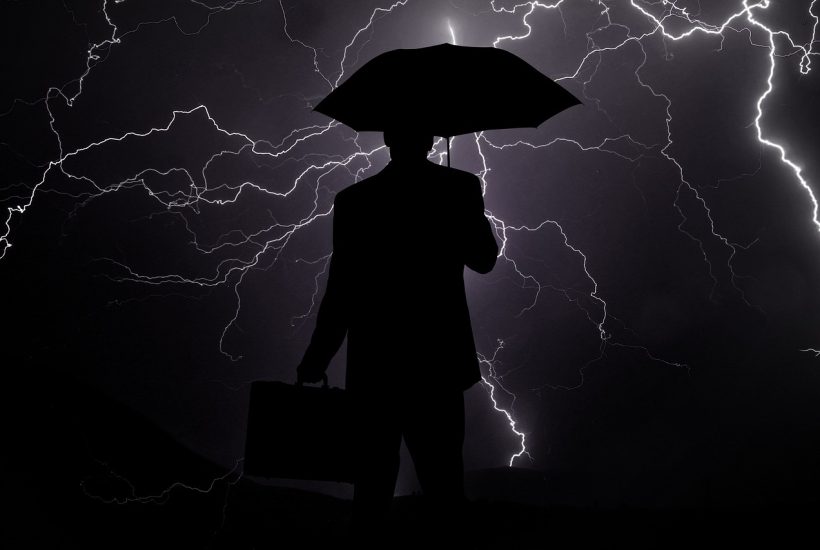Business
How Would Banks Fare Amid a Recession?
Banks truly are the bloodstream of an economy, and for the world’s largest economy (the US) through which trillions of dollars flow every day, their solvency is critical. The collapse caused by bank runs during the Great Depression, and that nearly happened again in 2008 were it not for government bailouts, necessitates these stress tests.

Any conversation on finance this year has begun and ended with inflation and central banks’ monetary policies, peppered with endless speculation of a recession. While the stock market often steals the show, one extremely important factor amid volatility is the strength of an economy’s banking system. I’m not referring to the central bank (the Fed), but the actual consumer banks through which all of our money flows 24/7/365. How would American banks hold up if a recession came to fruition in 2023?
Fortunately, there is an answer, but first, let’s recap what a recession is. The National Bureau of Economic Research is the official scorekeeper of US recessions. They define a recession as a “significant decline in economic activity that is spread across the economy and lasts more than a few months.” However, the more commonly used definition is the combination of two consecutive quarters of falling GDP accompanied by rising unemployment. This second metric is what has prevented 2022 from being labeled recessionary, as unemployment still remains historically low at 3.7%.
According to the US Bureau of Labor Statistics JOLTS Report (Job Openings and Labor Turnover Survey), the labor market appears to finally be cooling off. In October of this year, there were 1.7 job openings per available worker. This is down from April when the ratio hit it hit 2.0:1, but for context, there were 0.6 openings per work right before the pandemic. This decrease in job availability coupled with a drop in inflation, the PCE index (Personal Consumption Expenditures) fell from 6.3% year-over-year in September to 6.0% in October, is expected to slow the Fed’s interest rate hikes.
Knowing what a recession is and where the key economic benchmarks currently stand, banks can come back into question. Every year the Federal Reserve conducts stress tests to assess how large banks would perform in a recession. The latest test examined 33 large US banks, 8 of which are considered global systemically important banks. The test runs a severely adverse scenario that, in this case, assumed unemployment peaking at 10% by the third quarter of 2023, real GDP declines of more than 3.5% from the fourth quarter of 2021 to the first quarter of 2023, and steep declines in the stock, bond, and real estate markets. This year’s tests show banks have sufficient capital to absorb losses and continue lending throughout such a dire scenario.
The primary metric in the stress test is a bank’s common equity tier 1 capital ratio (CET1), a measure of a bank’s core equity capital versus its risk-weighted assets. This jargon may get confusing, but the main thing to realize is that a low ratio implies that the bank may not survive a financial shock and would require being bailed out. The minimum CET1 ratio is 4.5%, this is the same for all banks). In addition, there is a 2.5% stress capital buffer (SCB), this can be higher at certain banks. Last, for the global systemically important banks, there is a surcharge of 1%. For large banks, this creates a regulatory minimum ratio totaling 8%. The aggregate CET1 ratio is currently 11.4%, whereas a minimum of 9.7% would be required in the adverse scenario of the Fed’s stress test.
Banks truly are the bloodstream of an economy, and for the world’s largest economy (the US) through which trillions of dollars flow every day, their solvency is critical. The collapse caused by bank runs during the Great Depression, and that nearly happened again in 2008 were it not for government bailouts, necessitates these stress tests. While a recession is still up for debate in 2023, at least Americans can find comfort in their banks being ready to weather a storm.
__
(Featured image by geralt via Pixabay)
DISCLAIMER: This article was written by a third party contributor and does not reflect the opinion of Born2Invest, its management, staff or its associates. Please review our disclaimer for more information.
This article may include forward-looking statements. These forward-looking statements generally are identified by the words “believe,” “project,” “estimate,” “become,” “plan,” “will,” and similar expressions. These forward-looking statements involve known and unknown risks as well as uncertainties, including those discussed in the following cautionary statements and elsewhere in this article and on this site. Although the Company may believe that its expectations are based on reasonable assumptions, the actual results that the Company may achieve may differ materially from any forward-looking statements, which reflect the opinions of the management of the Company only as of the date hereof. Additionally, please make sure to read these important disclosures.
This information is for educational purposes only and should not be considered individual advice. Please consider your own financial situation, goals, and objectives and professional guidance before making any investments. Readers should contact their tax or legal professionals for any specific tax or legal advice.

-

 Cannabis2 weeks ago
Cannabis2 weeks agoMedical Cannabis in Poland 2025: Growth, Stability, and Wider Access
-

 Impact Investing3 days ago
Impact Investing3 days agoBeyond the ESG Label: Integrating Sustainability for Long-Term Value
-

 Crypto2 weeks ago
Crypto2 weeks agoBitMine Surpasses 4 Million ETH Holdings Amid Market Volatility
-

 Biotech3 days ago
Biotech3 days agoMedical Research in 2025: A Turning Point for Precision and Personalized Medicine























